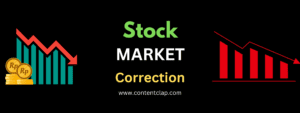Investing in stocks can be a rollercoaster ride because of something called market volatility.
This means that stock prices can go up and down a lot, which can make investors feel nervous and unsure about what to do.
While volatility can sometimes be a good thing, it can also be risky, especially if you don’t know much about how the stock market works.
Right now, things like inflation, tensions between countries, and changes in economic policies are making the stock market even more unpredictable.
Introduction
Market volatility is an inherent aspect of investing in stocks. It refers to the frequent and unpredictable fluctuations in stock prices that can cause anxiety and uncertainty among investors.
This article will give you some tips on how to handle market volatility, protect your investments, and capitalize on potential opportunities during these uncertain times.
Understanding Market Volatility
Market volatility happens when the stock market goes up and down a lot. This can be because of things like how the economy is doing, what’s happening in politics, and how people are feeling.
Some recent reasons for the stock market being so up and down are:
1. Inflation Concerns: Rising inflation erodes purchasing power and affects consumer behavior, leading to uncertainty in corporate earnings and stock valuations.
2. Geopolitical Tensions:
Global events, such as trade disputes and conflicts, can disrupt markets and
cause sudden shifts in investor sentiment.
3. Economic Policy Changes: Changes in interest rates, tax policies, and government spending can significantly impact market performance.
Strategies to deal with the Market Volatility
Dealing with market volatility can be challenging, but there are several strategies you can employ to navigate through turbulent times effectively:
Embrace a Long-Term Perspective
One way to handle this is to think long-term when you’re investing. Even though the market can be crazy in the short term, it usually goes up over a long period.
So, if you focus on your long-term goals and don’t make quick decisions based
on what’s happening right now, you’ll probably do better.
- Key Insight: For more than 20 years, the S&P 500 has made money for people despite its rough patches. If you keep your cool and don’t panic when the market goes down, you’ll probably make more money in the long run.
Diversification: The Foundation of a Resilient Portfolio
Diversification is like having a variety pack of snacks instead of just one kind.
You spread your money out into different types of investments, like stocks, bonds, and real estate, so that if one goes down, the others can help balance it out.
This way, you’re less likely to lose a lot of money when the market gets down. It’s like having a safety net for your money!
- Practical Tips:
- Asset Classes: Include a mix of stocks, bonds, real estate, and commodities.
- Sectors: Invest across various sectors such as technology, healthcare, finance, and consumer goods.
- Geographic Diversification: Consider international investments to spread risk beyond the U.S. market.
Regular Portfolio Rebalancing
When the market gets all crazy and starts going up and down a lot, it can mess up how much your stuff is worth in your investment account.
If you don’t check on it and make changes every so often, you might end up with too much or too little of certain things in your account.
By keeping an eye on it and making adjustments when needed, you can make sure you’re not taking on too much risk and that your investments are still on track to reach your goals in the long run.
- Example: If an investor’s target allocation is 60% stocks and 40% bonds, market volatility could cause the stock portion to increase to 70%. Rebalancing would involve selling some stocks and buying bonds to restore the original allocation.
Dollar-Cost Averaging: Mitigating Market Timing Risks
Dollar-cost averaging (DCA) involves investing a fixed amount of money at regular intervals, regardless of market conditions.
This strategy reduces the risk of investing a large sum at an inopportune time and helps average out the purchase price of investments over time.
- Benefits:
- Reduces the emotional stress of trying to time the market.
- Provides a disciplined approach to investing, encouraging consistent contributions.
- Takes advantage of market dips by purchasing more shares when prices are low.
Emergency Fund: A Safety Net for Financial Security
An emergency fund acts as a financial buffer during times of market volatility. It prevents investors from having to sell investments at a loss to cover unexpected expenses.
A well-stocked emergency fund typically covers 3-6 months of living expenses and should be kept in easily accessible, low-risk accounts.
- Importance: Having an emergency fund allows investors to ride out market downturns without panic-selling, preserving the potential for future gains.
Stay Informed but Avoid Overreacting
While staying informed about market trends and economic news is important, it’s equally crucial not to overreact to every piece of information.
Short-term market fluctuations are normal, and reacting impulsively can lead to poor investment decisions.
- Advice:
- Focus on the fundamentals of your investments rather than short-term market noise.
- Avoid checking your portfolio too frequently, as this can exacerbate anxiety and lead to hasty decisions.
Educate yourself to deal with market volatility by knowing about Candlestick Patterns
Use Volatility as an Opportunity
Market volatility can create opportunities for investors to buy high-quality stocks at discounted prices. By having a watchlist of desired stocks and sufficient liquidity, investors can take advantage of market dips to purchase shares at lower prices.
- Strategy:
- Identify strong companies with solid fundamentals that are temporarily undervalued due to market volatility.
- Invest gradually to avoid the risks associated with market timing.
Review and Adjust Your Risk Tolerance
Market volatility can serve as a reminder to reassess your risk tolerance and investment strategy. Investors should consider their financial goals, time horizon, and comfort level with risk to ensure their portfolio is appropriately positioned.
- Reassessment:
- Younger investors with a longer time horizon may choose to maintain a higher exposure to equities.
- Older investors or those nearing retirement may opt for a more conservative allocation to preserve capital.
Maintain Perspective During Market Downturns
It’s important to remember that market downturns are a normal part of the investment cycle. Historical data shows that markets tend to recover over time, often reaching new highs after periods of decline.
Maintaining perspective and staying focused on long-term objectives can help investors weather the storm.
- Historical Context: For example, the U.S. stock market has rebounded from major events like the 2008 financial crisis and the COVID-19 pandemic, rewarding investors who stayed invested.
Conclusion
Market volatility is an unavoidable aspect of stock investing, but it doesn’t have to derail your financial goals.
By adopting a long-term perspective, diversifying your portfolio, regularly rebalancing, and using strategies like dollar-cost averaging, you can mitigate the risks associated with volatility.
By staying calm and focused on your long-term objectives, you can navigate market volatility and potentially achieve favorable investment outcomes.
Disclaimer: The information for this written post has been taken from various sources on the internet. While we strive to provide accurate and reliable information, but cannot guarantee the accuracy or completeness of the information. Please use your discretion before making decisions or taking action based on that information. Therefore, any reliance you place on such information is strictly at your own risk.










